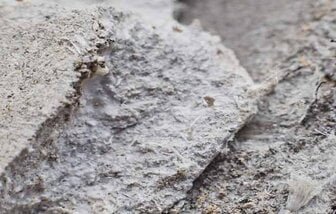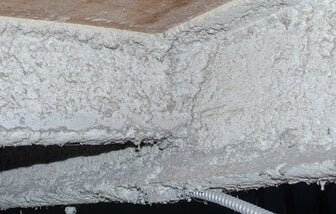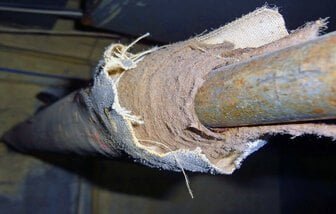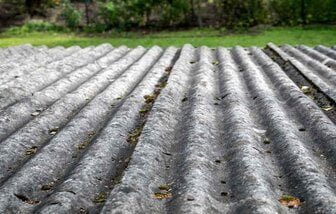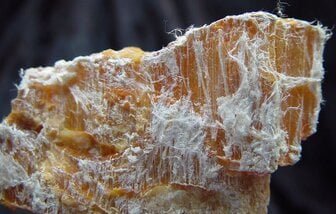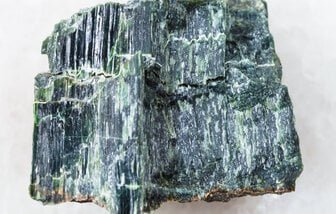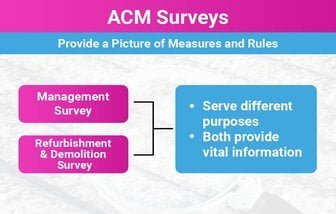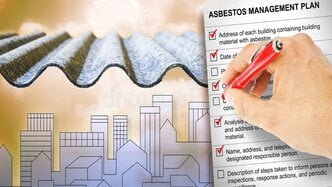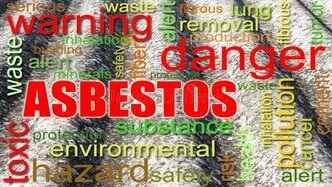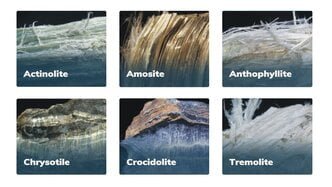Asbestos textured coatings
Learn about asbestos textured coatings, commonly known as Artex, used in UK construction from the 1960s to the 1990s. Understand the health risks of asbestos exposure, including asbestosis, lung cancer, and mesothelioma. Discover safe removal practices, regulations, and the importance of hiring licensed professionals to ensure compliance with the Control of Asbestos Regulations 2012.
Understanding Asbestos Textured Coatings and Safe Removal Practices in the UK
The safe removal of asbestos textured coatings necessitates thorough planning and strict adherence to safety protocols to avoid the release of hazardous asbestos fibers.
The process begins with an initial assessment and identification of asbestos presence by a qualified professional. This assessment is crucial as it informs the subsequent steps and ensures compliance with legal requirements.
The Control of Asbestos Regulations 2012 mandates that any work involving asbestos must be conducted by licensed and certified professionals.
These regulations outline the necessary certifications and legal requirements for handling asbestos, emphasizing the importance of proper training and expertise. Engaging a licensed asbestos contractor ensures that the removal is conducted safely and legally.
Personal Protective Equipment (PPE) is indispensable during the removal process. Workers must wear appropriate PPE, including disposable overalls, gloves, and a suitable respirator to prevent inhalation of asbestos fibers.
The work area should be sealed off using plastic sheeting to contain any potential fiber release, and warning signs should be displayed to prevent unauthorized access.
Proper sealing and disposal of asbestos materials are critical steps in the removal process. Asbestos waste should be double-bagged in heavy-duty, labeled bags and disposed of at designated asbestos waste facilities. The use of industrial-grade vacuum cleaners with HEPA filters is recommended for cleaning up any residual asbestos dust.
Decontamination procedures must be strictly followed. Workers should undergo thorough decontamination before leaving the work area, including removing PPE and taking showers if necessary, to ensure that no asbestos fibers are carried outside the containment zone.
Given the complexity and health risks associated with asbestos removal, hiring licensed asbestos removal contractors is highly recommended. Professional contractors are equipped with the necessary skills, equipment, and knowledge to perform the job safely and in compliance with regulations.
While DIY removal might seem cost-effective, it poses significant health risks and potential legal liabilities. Therefore, professional removal offers peace of mind and guarantees that the process is handled correctly and safely.
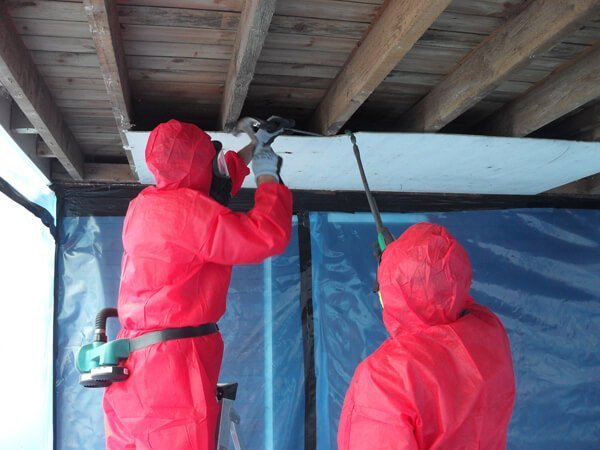
While asbestos was once considered a desirable material for its fire resistance and durability, it is now known to pose significant health risks. Inhalation of asbestos fibers can lead to serious respiratory diseases, including lung cancer, mesothelioma, and asbestosis.
Asbestos textured coatings are particularly hazardous because the fibers can easily become airborne when disturbed. Sanding, scraping, or removing these coatings can release a large number of asbestos particles into the air, creating a high risk of exposure.
It is important to note that asbestos textured coatings that are in good condition and undisturbed are generally considered safe. However, if you suspect that your home or building contains asbestos coatings, it is best to consult with a professional asbestos abatement contractor to assess the situation and determine the appropriate course of action.
Due to the health risks associated with asbestos, it is essential to manage and, if necessary, remove asbestos textured coatings in a safe and controlled manner. The UK has strict regulations in place to ensure the proper handling and disposal of asbestos-containing materials.
If you suspect that your property contains asbestos textured coatings, it is recommended to seek professional advice from licensed asbestos contractors. These experts can conduct a thorough inspection and testing to determine the presence of asbestos. They will also provide guidance on the best course of action, whether it be encapsulation, enclosure, or removal.
When removal is necessary, it should only be carried out by licensed asbestos removal contractors who have the expertise and equipment to safely handle and dispose of asbestos materials. They will follow strict guidelines and use appropriate containment measures to minimize the risk of fiber release during the removal process.
Here are some common examples of asbestos textured coatings:
- Spray-on Textured Coatings: This type of asbestos coating was commonly used in residential properties. It was applied using a spray gun, creating a textured finish that resembled popcorn or cottage cheese. The coating contained asbestos fibers mixed with other materials such as paint or adhesive.
- Troweled-on Textured Coatings: Troweled-on coatings were often used in commercial buildings. They were applied using a trowel or a similar tool to create a textured pattern on the surface. These coatings also contained asbestos fibers mixed with other substances.
- Mix-in Textured Coatings: Mix-in coatings were typically added to paint or other materials to create a textured finish. Homeowners or contractors would mix the coating with the desired product and apply it to the surface. These coatings contained asbestos fibers that became airborne when disturbed.
- Textured Ceiling Tiles: Some ceiling tiles were manufactured with a textured coating that contained asbestos. These tiles were often used in commercial buildings and residential properties. When disturbed or damaged, the asbestos fibers could be released into the air.
- Textured Wall Plaster: Asbestos was also used in textured wall plaster to create a decorative finish. This type of coating contained asbestos fibers mixed with plaster or other binding materials. When the plaster deteriorated or was disturbed, asbestos particles could become airborne.
Asbestos textured coatings were commonly used in buildings from the 1950s to the 1980s. These coatings, which provided a textured finish on ceilings and walls, contained asbestos fibers that can pose serious health risks when disturbed. It is crucial to be aware of the potential dangers associated with asbestos and to take appropriate measures to ensure the safety of occupants. If you suspect the presence of asbestos textured coatings, consult with a professional asbestos abatement contractor for proper assessment and removal.
Asbestos Millboard
Millboards manufactured between 1896 and 1965 can contain chrysotile asbestos (up to 97%). Often found in: Pipe runs, electrical gear, vaults, storage. Often used for: Fire protection on structural
Asbestos Cement
Generally containing 10-15% asbestos fibres which are bound in Portland cement or calcium silicate. Uncoated sheets, widely used in the past as a building material can be identified as light grey in
Asbestos Sprayed Coatings
Asbestos sprayed coatings have been widely used in the construction industry in the past, particularly in the United Kingdom
Asbestos Tiles
Learn about asbestos floor tiles in the UK, including their identification, dangers, and management. Find out how to identify asbestos floor tiles
Asbestos Lagging, Ropes & Yarns
Asbestos lagging and ropes were once widely used for their insulation properties. However, due to the health risks associated with asbestos exposure, their use has been banned in many countries.
Asbestos Textured Coatings
Asbestos textured coatings, also known as Artex or similar products, were widely used in the construction industry in the UK from the 1960s to the 1990s. These coatings were applied to ceilings
Corrugated Asbestos Panels
When it comes to garage roofing in the UK, one type of material that was widely used in the past is corrugated asbestos panels. However ue to health and safety concerns, the use of asbestos has been banned
Crocidolite Asbestos
Learn about crocidolite asbestos, a highly hazardous form of asbestos that was widely used in various industries. Discover its properties, health risks, and the importance of professional testing and removal.
Amosite Asbestos
Amosite asbestos, also known as brown asbestos, is a type of asbestos mineral that was widely used in various industries for its heat resistance and insulating properties.
Chrysotile Asbestos
Learn about chrysotile asbestos, its applications, and the potential health risks associated with exposure. Understand the importance of safety measures and regulations to prevent asbestos
Asbestos Surveys
We are able to provide any level of survey required, up to the Demolition and Refurbishment survey now required prior to the demolition of any building or structure.
What is Asbestos?
Asbestos was commonly used as a construction material in the UK between the 1950s and 1980s in particular. If your home was built between these years, chances are that you are living with Asbestos
Asbestos Management Plan
An asbestos management plan is essential for managing asbestos-containing materials (ACMs) in buildings. It aims to protect occupants and workers from asbestos exposure through identification, assessment, and control of ACMs.
Asbestos Dangers
Learn about the dangers of asbestos, its health risks including mesothelioma and lung cancer, and how to protect yourself from exposure. Understand the regulations and laws regarding asbestos, and find resources and support for asbestos-related issues.
Types Of Asbestos
Learn about the different types of asbestos, including chrysotile asbestos, amphibole asbestos, tremolite asbestos, and anthophyllite asbestos. Understand the characteristics and health risks associated with each type of asbestos.
How To Manage Asbestos
Dealing with asbestos requires caution and adherence to proper safety procedures. Identifying asbestos and taking appropriate action is crucial to protect the health and well-being of individuals. If you suspect the presence of asbestos.
Ready to start your project?
Committed to Excellence on all levels
Let's Work Together
Please complete the form below and someone from the Total team will be in touch to discuss your asbestos requirements For urgent needs, our customer support team is available through various channels. You can reach us via phone during business hours, or through our dedicated email support. We are committed to providing timely assistance and ensuring your asbestos concerns are addressed promptly and professionally.


